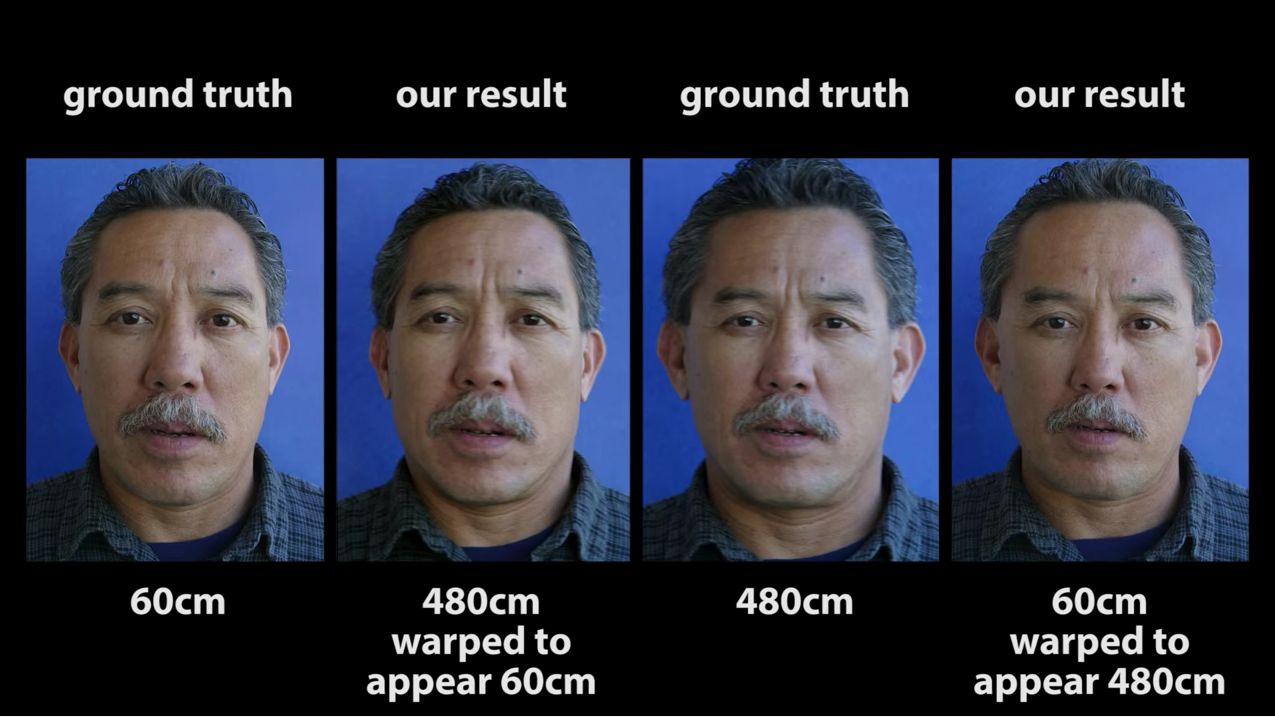A More Flattering Selfie
November 30, 2016

Taking “selfies”—self-portraits using the front-facing camera on a mobile phone—has become a hugely popular form of photography. But as selfie-takers know, these images can be pretty unflattering: they tend to distort a person’s facial features, making noses look bigger and ears look smaller. That happens because the camera lens is extremely close to a person’s face, creating a narrow sense of perspective.
But it doesn’t have to be that way. Researchers from Adobe and Princeton University collaborated to create software that makes selfie images look more realistic. It works by identifying numerous facial reference points and then building a warp in the image to approximate what the face would look like from farther away—the distance from which a person’s face is typically seen by others.
This technique effectively undistorts the image, offering photographers a much more lifelike—and more flattering—rendering. Researchers have even created a test site for selfie-takers to try it out themselves.
The research team of Eli Shechtman of Adobe Research and Ohad Fried of Princeton, along with Dan B Goldman (formerly of Adobe Research) and Princeton’s Adam Finkelstein, presented their work at SIGGRAPH 2016. Their technology was featured in this Adobe video and highlighted in media outlets including Co.Design, Forbes, Gizmodo, CNN, Motherboard, and more.